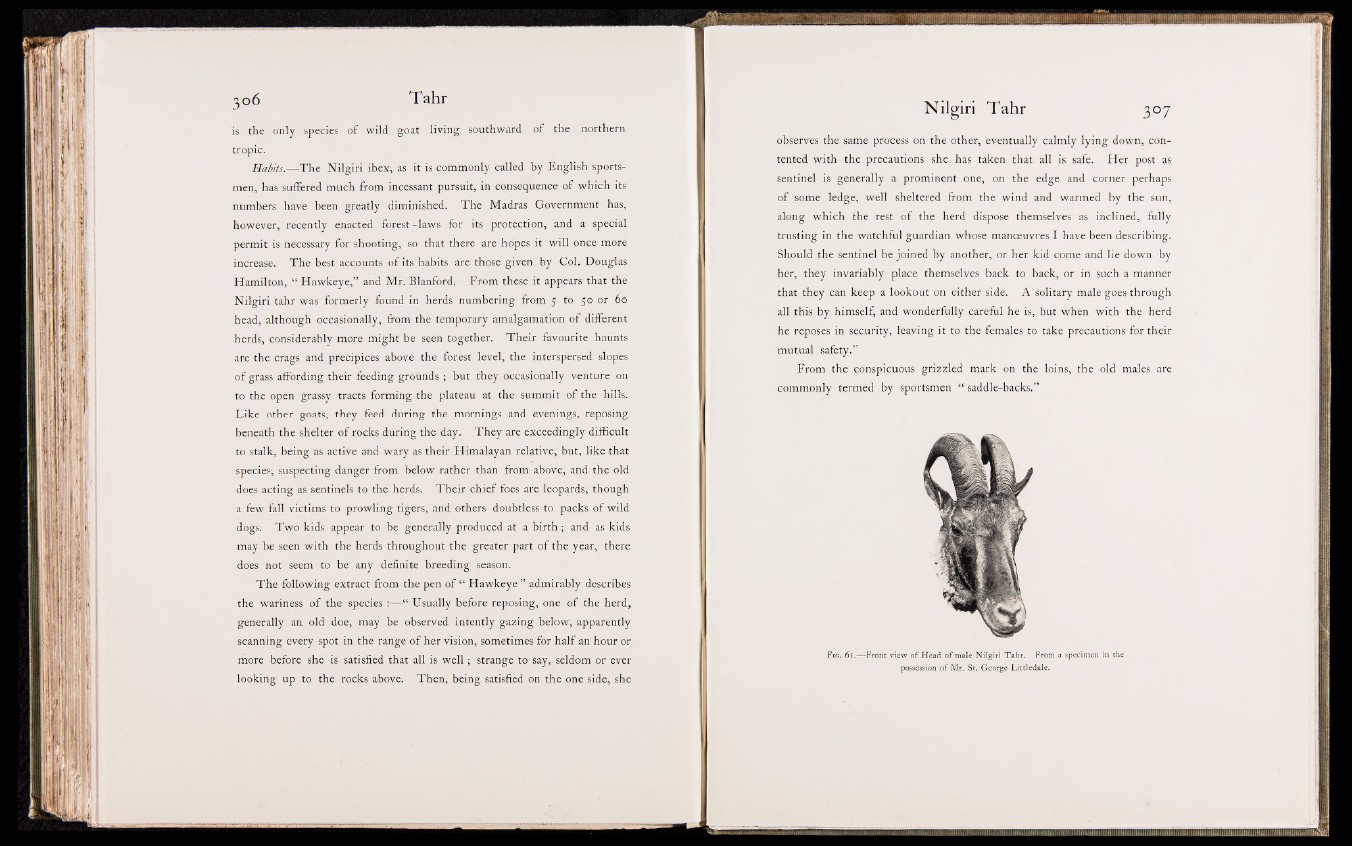
is the only species of wild goat living southward of the northern
tropic.
ffefcj-H-The Nilgiri ibex, as it is commonly called by English sportsmen,
has suffered much from incessant pursuit, in consequence of which its
numbers have been greatly diminished. The Madras Government has,
however, recently enacted forest-laws sfjif its protection, and a special
permit is necessary for shooting, so that there are hopes it will once more
increase. The best accounts of its habits are those given by Col. Douglas
Hamilton, “ Hawkeye,” and Mr. Blanford. From these it appears that the
Nilgiri tahr was formerly found in herds numbering from 5 to 50 or 60
head, although occasionally, from the temporary amalgamation of different
herds, considerably more might be seen together. Their favourite haunts
are the crags and precipices above the forest level, the interspersed slopes
of grass affording their feeding grounds ; but they occasionally venture on
to the open grassy tracts forming the plateau at th«Msummit of the hiljH
Like other goats, they feed during the mornings and evenings, reposing
beneath the shelter of rocks during the day. They are exceedingly difficult
to stalk, being as active and wary as their Himalayan relative, but, like that
species, suspecting danger from below rather than from above, and the old
does acting as sentinels to the herds. Their chief foes are leopards, though
a few fall victims to prowling tigers, and others doubt^Hlq packs of wild
dogs. Two kids appear to be generally produced at a birth; and as kids
may be seen with the herds throughout the greater part of the year, there
does not seem to be any definite breeding season.
The following extract from the pen of “ Hawkeye ” admirably describes
the wariness of the spe c ie stS“ Usually before reposing, one of the herd,
generally an old doe, may be observed intently gazing below, apparently
scanning every spot in the range o f her vision, sometimes for half an hour or
more before she is satisfied that all is well ; strange to say, seldom or ever
looking up to the rocks above. Then, being satisfied on the one side, she
observes the same process on the other, eventually calmly lying down, contented
with the precautions she has taken that all is safe. Her post as
sentinel is generally a prominent one, on the edge and corner perhaps
of Some ledge, well sheltered from the wind and warmed by the sun,
along which the rest of the herd dispose themselves as inclined, fully
trusting in the watchful guardian whose manoeuvres I have been describing.
Should the sentinel be joined by another, or her kid come and lie down by
her, they invariably place themselves back to back, or- in such a manner
that they can keep a lookout on either side. A solitary male goes through
all this by himself, and wonderfully Careful he is, but when with the herd
he reposes in security, leaving it to the females to take precautions for their
mutual safety.”
From the conspicuous grizzled mark on the loins, the old males are
commonly termed byitgportsmen “ saddle-backs.”
F ig . —Front view of Head of male Nilgiri Tahr. From a specimen in the
possession of Mr. St. George Littledale.